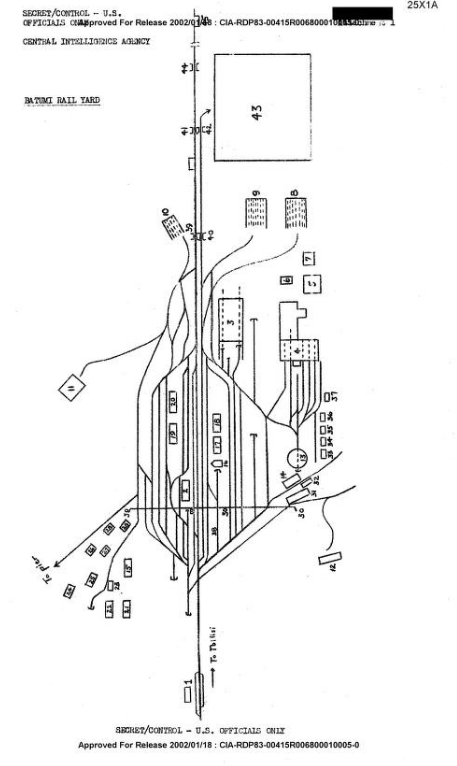'THEY DO SEEM TO BLOW THEIR NOSES WITH THEIR FINGERS QUITE A BIT'
Declassified secret CIA reports on the Caucasus
|
|
|
Having returned to the ever-amazing Archive.org, I stumbled upon a series of confidential CIA reports on the Caucasus (and often the wider USSR as well). These appear to be question-and-answer debriefings of people having travelled to the Soviet Caucasus, no doubt in a professional capacity—e.g. Western oil engineers taking the train from Baku to Tbilisi—and some of their answers are really quite amusing. There are a number of these reports, all covering a variety of subject—e.g. 'Population and Economic Conditions in the Tbilisi Area' (date of distribution: 12 Oct. 1950); 'Highway Travel, Tbilisi to Gori/Railway Travel, Baku to Tbilisi, Kharkov to Odessa, Odessa to Kiev/New Construction/Route to Baku/Security Restrictions in Baku' (5 Mar. 1954); 'Cripples and Beggars/State of Public Sanitation/Security Measures, Baku to Tbilisi/Anti-US Biological Warfare Campaign' (idem); etc. The majority of the reports focus, naturally, upon Tbilisi's famous Sukhoi factory, but at first glance these seem to contain more technical and therefore less amusing information.
Note that all this information is explicitly described as 'unevaluated'—like my beautiful WW2 maps of Tbilisi and Batumi, which are helpfully branded 'THIS MAP IS PROBABLY UNRELIABLE AND HAS NOT BEEN CHECKED IN THE FIELD'—and that the documents' date of distribution is precisely that: every report also bears a 'date acquired (by source)' as well as a 'date (of info.)'. The latter two dates have invariably been censored, but one can often make an educated guess based upon the information itself.
Here are some typical exchanges:
Q. Did you observe any blind, crippled, or malnourished persons in cities or rural areas?
A. I saw many cripples. Most of them were minus a leg and were using crutches. They do not seem to use artificial limbs. I saw a group of ten or fifteen beggars on the steps of a church. One of then was blind.
Q. What is the state of municipal sanitation in regard to: a. cleanliness of streets and buildings?
A. Their streets were very clean. Gangs of women were always working on them. Baku was the dirtiest town we visited. The government buildings all seemed to be new and in good repair.
b. spitting?
A. I didn't notice un awful lot of this, [but] they do seem to blow their noses with their fingers quite a bit.
Q. Did you observe any new construction of: canals, dams, power-lines or pipe-lines?
A. No, I did not. However, in Tbilisi we were told that a new water supply pipe-line was being built and that it would increase the supply of [hydro-]electricity for the city. I saw a tremendous amount of miscellaneous building going on. Their construction looks pretty bad, though. I'm no expert, but they seem to be throwing up their buildings without worrying whether they'll last or not. They don't seem to tuck-point the bricks and the buildings which aren't covered by stucco look pretty awful. I don't see how they can last more than 15-20 years.
Some other reports contain some mysterious information:
North of Tbilisi, at the foot of Mount Kazbek and near the Georgian military highway, there is a mystery tunnel which, reportedly, is to be used for neither a road nor a railroad. Prisoners-of-war who have worked there are bound to secrecy and appear to be afraid to discuss the subject. Generally, men who have only a slight chance of returning to Germany are assigned to this work.
There are also some occasional drawings or maps, e.g. these two diagrams of Batumi and Samtredia marshalling yards:
|
|
|
Unless stated otherwise or obviously not the case, all the text and images on this website are © A.J.T. Bainbridge 2006-2022
Do get in touch! Gmail: alexjtb





